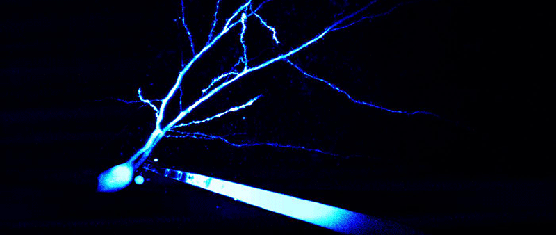Jennifer A. Bauer, Katherine M. Lambert, and John A. White, Brain Institute, University of Utah
Volume 61, Issue 5, Page:1448-1456

Control-based strategies have been critical for advancing our understanding of the mechanisms of electrical excitability in nerve and muscle cells. For example, in the voltage-clamp technique, experimentalists use control technology to move membrane potential between (typically) fixed values, nearly instantaneously. Fixing membrane potential allows one to linearize the highly nonlinear processes that underlie the generation of action potentials, and thus describe these processes using a relatively simple mathematical model, but care must be taken to eliminate contamination of the data from other regions of the cell.
More recently, dynamic-clamp techniques have emerged. These more complex control-based systems measure membrane potential, and in real time, introduce membrane-potential-dependent current into the recorded cell. Typically, these introduced currents represent the actions of one or more membrane conductances, and are calculated as the product of the conductance and the driving force (i.e., is the instantaneous difference between membrane potential and an equilibrium potential). In different applications, the introduced conductance can be calculated ahead of time, or on the fly based on a real-time simulation that may account for a restricted set of ion channels or an entire simulated neural network. The power of the dynamic-clamp approach is that it allows one to test highly specific, simulation-based hypotheses in an experimental setting.
Use of the dynamic-clamp technique presents several challenges. These include inevitable errors in employed mathematical models; inaccuracies in the location and distribution of introduced, simulated conductances; problems in using one electrode to both measure membrane potential and pass current; and the inability to replicate the chemical identities of simulated ion fluxes. We end the review by discussing emerging approaches to overcome these challenges, as well as other developing applications of real-time, feedback-based approaches in the study of biological systems.

